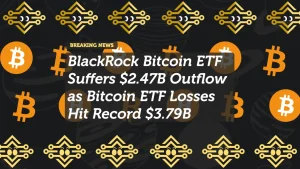
The Polarized Public Discourse on Crypto: Future of Finance or Speculative Bubble?
Cryptocurrency has emerged as one of the most polarizing topics in modern finance. For some, it represents the future of finance—a decentralized, transparent system that puts power in the hands of the people. For others, it’s nothing more than a speculative bubble filled with hype and risk. This polarized public discourse on crypto has only intensified in recent years, especially following high-profile cases like the FTX collapse in 2022, which left billions of dollars in losses and deepened skepticism among regulators and the public. Media coverage has added fuel to the fire, swinging from exuberant narratives during bull markets to cautionary tales during downturns, further shaping public perception and influencing regulatory attitudes.
Crypto as the Future of Finance: The Optimistic View
Proponents of cryptocurrency believe that digital assets and blockchain technology are set to revolutionize the financial world. They see crypto as a path to greater financial freedom, especially in regions where traditional financial systems are slow, costly, or unreliable. Here’s why many people view crypto as a transformative force:
- Decentralization and Transparency
Unlike traditional financial institutions, which are controlled by centralized authorities, cryptocurrencies operate on decentralized networks. This structure theoretically reduces the risk of corruption and ensures transparency, as all transactions are recorded on a public ledger. - Financial Inclusion
Cryptocurrencies can provide access to financial services for people who are unbanked or underbanked. For those in developing nations with limited access to traditional banking, crypto offers an alternative way to store and transfer wealth without needing a traditional bank account. - Reduced Transaction Costs and Speed
Blockchain technology enables faster and cheaper transactions, especially for cross-border payments. Traditional financial systems often take days to settle international transfers and charge high fees, whereas crypto transactions can be completed in minutes with minimal costs. - A Hedge Against Inflation
With inflation concerns rising globally, some see crypto (especially Bitcoin) as a hedge against fiat currency devaluation. Bitcoin, for example, has a fixed supply of 21 million coins, which contrasts sharply with central banks’ ability to print money and inflate fiat currencies.
Crypto as a Speculative Bubble: The Skeptical View
On the flip side, many critics argue that the risks and speculative nature of crypto make it unsuitable as a reliable financial system. High-profile cases like the FTX collapse, where investor funds were allegedly mismanaged and lost, have reinforced the idea that crypto is too risky. Here are some key points that fuel this skepticism:
- Volatility and Speculation
Cryptocurrencies are notorious for their price volatility. Bitcoin, for instance, has experienced price swings of over 50% within a single year. Such extreme fluctuations make crypto an unreliable store of value and a risky investment, particularly for retail investors. - Lack of Consumer Protections
In traditional finance, there are regulatory safeguards to protect consumers. If a bank fails, for example, depositors are usually protected up to a certain amount by insurance programs like the FDIC in the U.S. In contrast, if a crypto exchange goes bankrupt, as in the case of FTX, investors have little recourse to recover their funds. - Fraud and Scams
The crypto industry has been plagued by scams, rug pulls, and fraudulent projects. According to recent data from blockchain analytics firm Chainalysis, crypto scams accounted for billions of dollars in losses in 2022 alone. This lack of accountability and the prevalence of fraudulent schemes contribute to the perception that crypto is unsafe. - Environmental Concerns
Proof-of-Work (PoW) cryptocurrencies like Bitcoin require massive amounts of energy to maintain their networks. Critics argue that this energy consumption is unsustainable and poses a significant environmental threat, especially in the context of global climate change efforts.
The Impact of High-Profile Failures on Public Perception
Cases like the FTX collapse have had a profound impact on the crypto industry’s reputation. Once a prominent player in the crypto space, FTX’s bankruptcy and the arrest of its CEO, Sam Bankman-Fried, sent shockwaves through the market, leading to billions in losses and fueling distrust. Events like this reinforce the skeptical narrative that crypto is filled with high-stakes risks and questionable business practices.
Such incidents are not isolated. The industry has seen similar collapses with companies like Celsius, Terra, and Voyager. These failures have not only affected retail investors but have also prompted institutional investors and regulators to reevaluate their stance on crypto. The result is a more cautious approach, with increased calls for stricter oversight and regulation.
Media’s Role in Shaping Public Perception of Crypto
The media plays a powerful role in the polarized public discourse on crypto. During bull markets, headlines are filled with success stories of investors making huge returns, and blockchain innovation is celebrated. But when the market dips, the media shifts its focus to cautionary tales of lost fortunes and scams, creating a cycle of boom-and-bust narratives.
- Boom Narratives
During market surges, the media often highlights crypto millionaires, groundbreaking blockchain projects, and stories of financial empowerment. These narratives attract new investors and contribute to the hype, pushing prices even higher. This cycle reinforces the belief among some that crypto is a path to financial success and freedom. - Bust Narratives
In market downturns, media coverage quickly shifts to stories of losses, scams, and fraud. Headlines focus on the risks and dangers of crypto, sometimes portraying the entire industry as a speculative bubble. This shift in tone fuels skepticism and affects public perception, often leading to renewed calls for regulatory action. - Impact on Regulatory Attitudes
Media coverage doesn’t just influence the public; it also shapes the views of policymakers. Negative media attention on crypto failures can lead regulators to take a harder stance on the industry, as public pressure mounts for action to protect consumers.
The Growing Push for Crypto Regulation
The polarized discourse around crypto has spurred more calls for regulation, especially as high-profile failures have damaged public trust. Governments around the world are now actively debating how to regulate the industry without stifling innovation. In the U.S., for example, Congress is considering bills like the Financial Innovation and Technology for the 21st Century Act to provide clearer guidelines on how digital assets are classified and regulated.
Key areas of regulatory focus include:
- Classification of Digital Assets: Determining whether specific cryptocurrencies are securities, commodities, or a new category altogether.
- Consumer Protections: Establishing safeguards to protect investors, such as mandating that exchanges hold customer funds in reserve to prevent misuse, as seen in the FTX case.
- Anti-Money Laundering (AML) Compliance: Ensuring that crypto platforms adhere to AML and Know Your Customer (KYC) regulations to prevent illicit activities.
While proponents argue that regulation could provide legitimacy and stability to the industry, critics fear that overly strict rules could hinder innovation and push crypto businesses out of the U.S.
Where Does Public Opinion Stand?
Public opinion on crypto remains sharply divided. Younger, tech-savvy generations tend to be more optimistic, viewing crypto as a revolutionary technology with the potential to disrupt traditional finance. Older generations and traditional investors, on the other hand, are more likely to view crypto with skepticism, seeing it as risky and speculative.
Interestingly, surveys indicate that crypto adoption is highest in countries with unstable currencies or restricted access to financial services, suggesting that public perception of crypto can vary significantly based on geographic and economic context.
In Summary
The polarized public discourse on crypto reflects both its promise and its pitfalls. For every story of financial empowerment and innovation, there is another of fraud and financial loss. High-profile failures like the FTX collapse have intensified skepticism and added fuel to calls for regulation, while the media’s shifting narratives shape public perception and impact regulatory attitudes.
The future of cryptocurrency will likely be influenced by a delicate balance between innovation and regulation. If done thoughtfully, regulation could bring stability and legitimacy to the crypto market, addressing concerns over fraud and investor protection. However, the polarized nature of public discourse suggests that crypto will remain a contentious topic, with its future shaped as much by perception as by policy.
FAQs
1. Why is crypto viewed as both innovative and risky?
Crypto is seen as innovative due to its potential for decentralization, transparency, and financial inclusion. However, it’s also viewed as risky because of its volatility, lack of consumer protections, and association with scams.
2. How did the FTX collapse impact the public’s view of crypto?
The FTX collapse damaged public trust, reinforcing the perception that crypto can be unsafe
















